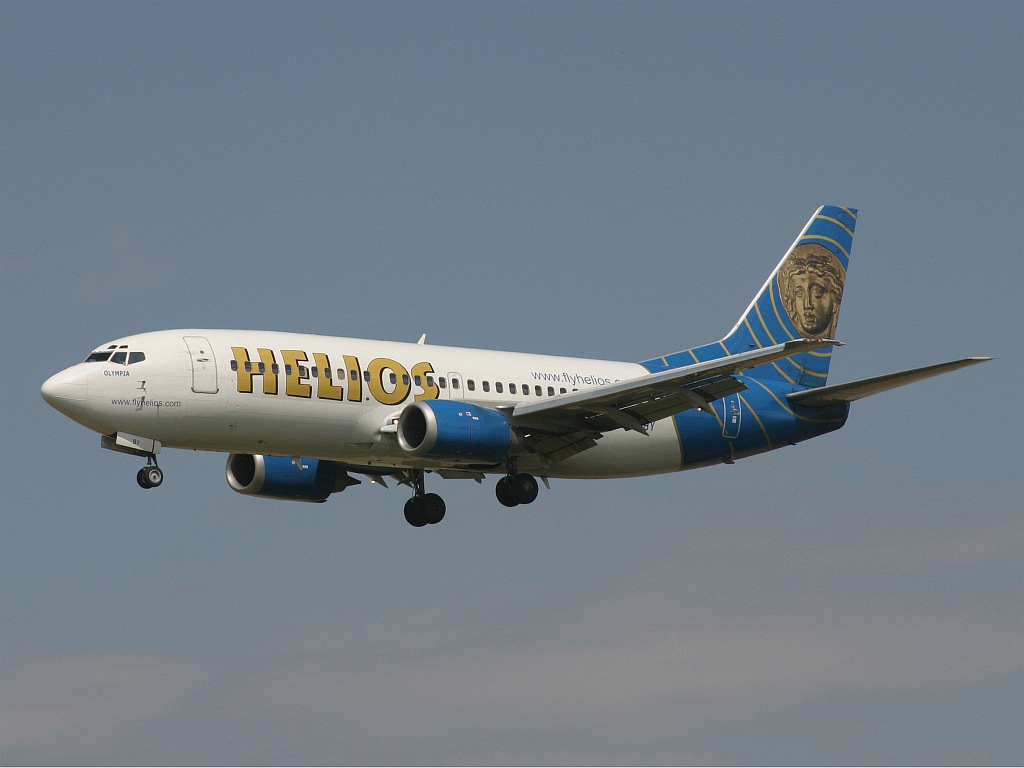 Helios Airways Flight 522 was a scheduled passenger flight from Larnaca, Cyprus, to Prague, Czech Republic, with a stopover in Athens, Greece. Shortly after take-off on 14 August 2005, air traffic control (ATC) lost contact with the aircraft operating the flight, named Olympia; it eventually crashed near Grammatiko, Greece, killing all 121 passengers and crew on board. It is the deadliest aviation accident in Greek history. An investigation into the crash by the Air Accident Investigation and Aviation Safety Board (AAIASB) concluded that the crew had neglected to set the pressurization system to automatic during the take-off checks. This caused the plane not to be pressurized during the flight and resulted in nearly everyone on board suffering from generalized hypoxia, thus resulting in a "ghost flight". The negligent nature of the accident led to lawsuits being filed against Helios Airways and Boeing, with the airline also being shut down by the Government of Cyprus the following year. The aircraft involved in this accident, initially registered as D-ADBQ,[3] was a Boeing 737-300, first flown on 29 December 1997, and was operated by DBA from 1998 until 2004. It was then leased by Helios Airways on 16 April 2004, and was re-registered 5B-DBY with the nickname Olympia.[3] Besides the downed aircraft, the Helios fleet also included two leased Boeing 737-800s and an Airbus A319-100, which were delivered on 14 May 2005. The plane had arrived at Larnaca International Airport from London Heathrow Airport at 01:25 local time on the day of the accident.[4]:?3? It was scheduled to leave Larnaca at 09:00 and fly to Prague Ruzyne International Airport, with a stop off at Athens International Airport, where it was due to arrive at 10:45.[4]:?4?
Helios Airways Flight 522 was a scheduled passenger flight from Larnaca, Cyprus, to Prague, Czech Republic, with a stopover in Athens, Greece. Shortly after take-off on 14 August 2005, air traffic control (ATC) lost contact with the aircraft operating the flight, named Olympia; it eventually crashed near Grammatiko, Greece, killing all 121 passengers and crew on board. It is the deadliest aviation accident in Greek history. An investigation into the crash by the Air Accident Investigation and Aviation Safety Board (AAIASB) concluded that the crew had neglected to set the pressurization system to automatic during the take-off checks. This caused the plane not to be pressurized during the flight and resulted in nearly everyone on board suffering from generalized hypoxia, thus resulting in a "ghost flight". The negligent nature of the accident led to lawsuits being filed against Helios Airways and Boeing, with the airline also being shut down by the Government of Cyprus the following year. The aircraft involved in this accident, initially registered as D-ADBQ,[3] was a Boeing 737-300, first flown on 29 December 1997, and was operated by DBA from 1998 until 2004. It was then leased by Helios Airways on 16 April 2004, and was re-registered 5B-DBY with the nickname Olympia.[3] Besides the downed aircraft, the Helios fleet also included two leased Boeing 737-800s and an Airbus A319-100, which were delivered on 14 May 2005. The plane had arrived at Larnaca International Airport from London Heathrow Airport at 01:25 local time on the day of the accident.[4]:?3? It was scheduled to leave Larnaca at 09:00 and fly to Prague Ruzyne International Airport, with a stop off at Athens International Airport, where it was due to arrive at 10:45.[4]:?4?
The captain of the flight was Hans-Jürgen Merten, a 58-year-old East German contract pilot[5] hired by Helios for holiday flights, who had been flying for 35 years (previously for Interflug from 1970 to 1991), and had accrued a total of 16,900 flight hours (including 5,500 hours on the Boeing 737). The first officer was Pampos Charalambous, a 51-year-old Cypriot pilot who had flown exclusively for Helios for the past five years, accruing 7,549 flight hours throughout his career (3,991 of them on the Boeing 737). Louisa Vouteri, a 32-year-old Greek national living in Cyprus, had replaced a sick colleague as the chief flight attendant. When the aircraft arrived at Larnaca from London earlier that morning, the previous flight crew had reported a frozen door seal, and abnormal noises coming from the right aft service door. They requested a full inspection of the door.[4]:?33–34? The inspection was carried out by a ground engineer, who then performed a pressurization leak check. In order to carry out this check without requiring the aircraft's engines, the pressurization system was set to "manual". However, the engineer failed to reset it to "auto" on completion of the test.[4]:?171?
After the aircraft was returned into service, the flight crew overlooked the pressurization system state on three occasions: during the pre-flight procedure, the after-start check, and the after take-off check. During these checks, no one on the flight deck noticed the incorrect setting.[4]:?171? The aircraft took off at 09:07[4]:?16? with the pressurization system still set to "manual", and the aft outflow valve partially open.[4]:?78?
As the aircraft climbed, the pressure inside the cabin gradually decreased. As it passed through an altitude of 12,040 feet (3,670 m), the cabin altitude warning horn sounded.[4]:?16? The warning should have prompted the crew to stop climbing,[4]:?133? but it was misidentified by the crew as a take-off configuration warning, which signals that the aircraft is not ready for take-off, and can sound only on the ground. The alert sound is identical for both warnings.[4]:?133?
In the next few minutes, several warning lights on the overhead panel in the cockpit illuminated. One or both of the equipment cooling warning lights came on to indicate low airflow through the cooling fans (a result of the decreased air density), accompanied by the master caution light. The passenger oxygen light illuminated when, at an altitude of approximately 18,000 feet (5,500 m), the oxygen masks in the passenger cabin automatically deployed.[4]:?17,?134?
Shortly after the cabin altitude warning sounded, the captain radioed the Helios operations centre and reported "the take-off configuration warning on" and "cooling equipment normal and alternate off line."[4]:?16? He then spoke to the ground engineer, and repeatedly stated that the "cooling ventilation fan lights were off."[4]:?16? The engineer (the one who had conducted the pressurization leak check) asked: "Can you confirm that the pressurization panel is set to AUTO?" However, the captain, already experiencing the onset of hypoxia's initial symptoms,[4]:?135? disregarded the question, and instead asked in reply, "Where are my equipment cooling circuit breakers?"[4]:?17? This was the last communication with the aircraft.[4]:?137?
The aircraft continued to climb until it leveled off at FL340, approximately 34,000 feet (10,000 m).[4]:?17? Between 09:30 and 09:40, Nicosia ATC repeatedly attempted to contact the aircraft, without success.[4]:?17? At 09:37, the aircraft passed from Cyprus flight information region (FIR) into Athens FIR, without making contact with Athens ATC.[4]:?17? Nineteen attempts to contact the aircraft between 10:12 and 10:50 also met with no response,[4]:?17–18? and at 10:40, the aircraft entered the holding pattern for Athens Airport, at the KEA VOR, still at FL340.[4]:?18? It remained in the holding pattern, under control of the auto-pilot, for the next 70 minutes.[4]:?18?
At this point, the Greek military decided to intervene. Sources differ on if they were contacted by air traffic control or if they chose to intervene themselves, believing there may have been a possible terrorism incident. At 11:05, two F-16 fighter aircraft from the Hellenic Air Force 111th Combat Wing were scrambled from Nea Anchialos Air Base to establish visual contact.[8] They intercepted the passenger jet at 11:24, and observed that the first officer was slumped motionless at the controls, and the captain's seat was empty.[9] They also reported that oxygen masks were dangling in the passenger cabin.[4]:?18?
At 11:49, flight attendant Andreas Prodromou entered the cockpit and sat down in the captain's seat, having remained conscious by using a portable oxygen supply.[4]:?139?[6] Early media reports erroneously claimed his girlfriend and fellow flight attendant, Haris Charalambous, was also seen in the cockpit helping Prodromou try to control the aircraft.[10] Prodromou held a UK Commercial Pilot Licence,[4]:?27? but was not qualified to fly the Boeing 737. Prodromou waved at the F-16s very briefly, but almost as soon as he entered the cockpit, the left engine flamed out due to fuel exhaustion,[4]:?19? and the plane left the holding pattern and started to descend.[4]:?19? Crash investigators concluded that Prodromou's experience was insufficient for him to be able to gain control of the aircraft under the circumstances.[4]:?139? However, Prodromou succeeded in banking the plane away from Athens and towards a rural area as the engines flamed out, with his actions meaning that there were no ground casualties.[11] Ten minutes after the loss of power from the left engine, the right engine also flamed out,[4]:?19? and just before 12:04, the aircraft crashed into hills in the vicinity of the village of Grammatiko, 40 km (25 mi; 22 nmi) from Athens in East Attica, killing all 121 passengers and crew on board. 
Specifications
General Characteristics
- Predecessor Boeing 737-300 HELIOS
- Created On iOS
- Wingspan 110.8ft (33.8m)
- Length 106.3ft (32.4m)
- Height 38.4ft (11.7m)
- Empty Weight 111,435lbs (50,546kg)
- Loaded Weight 143,560lbs (65,117kg)
Performance
- Power/Weight Ratio 4.226
- Wing Loading 109.5lbs/ft2 (534.5kg/m2)
- Wing Area 1,311.3ft2 (121.8m2)
- Drag Points 46017
Parts
- Number of Parts 1060
- Control Surfaces 5
- Performance Cost 3,766

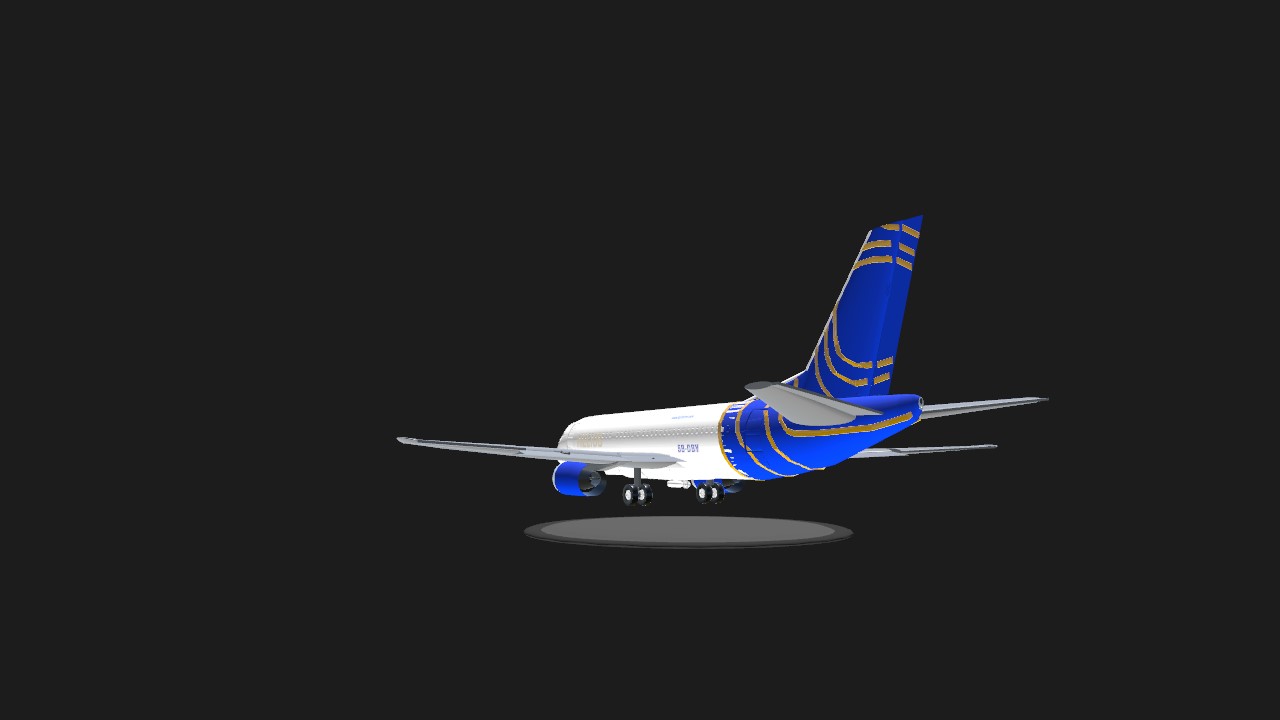
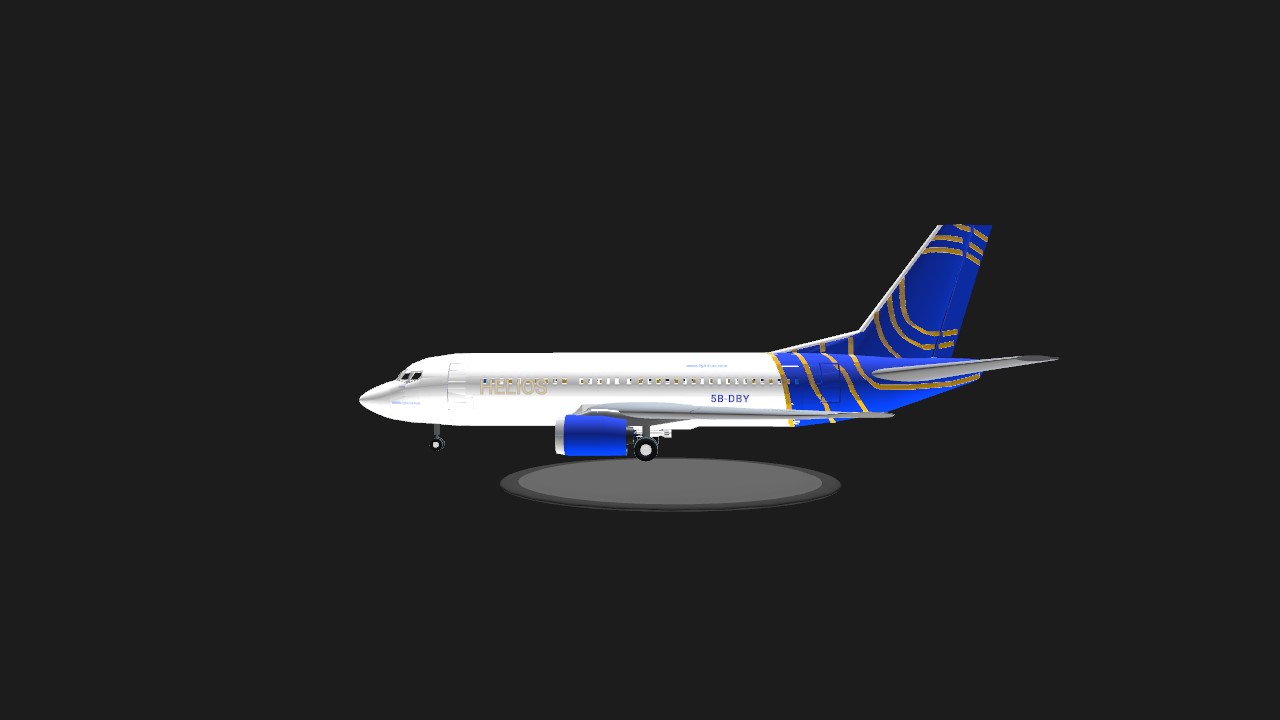
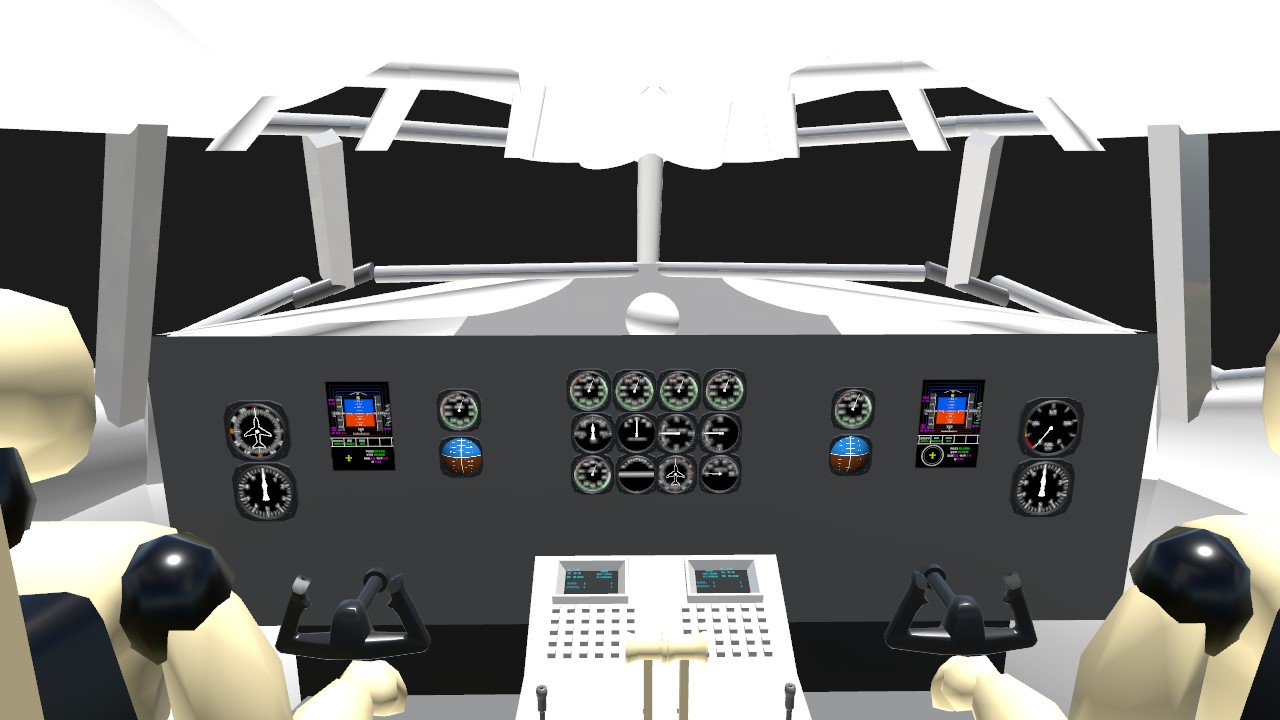
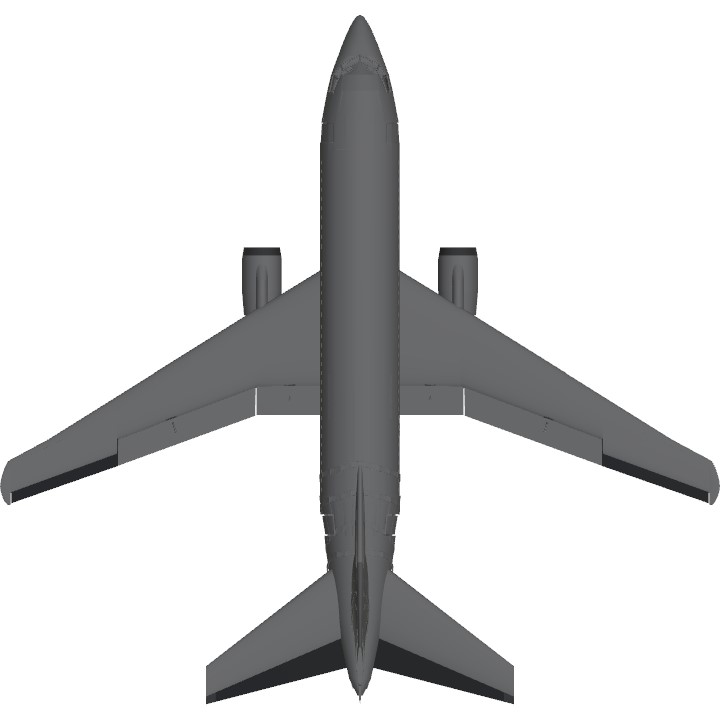
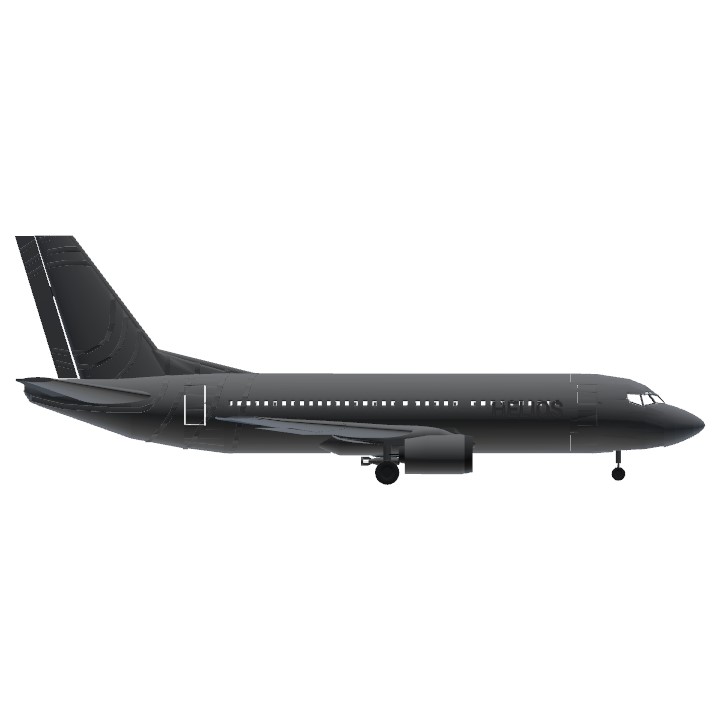
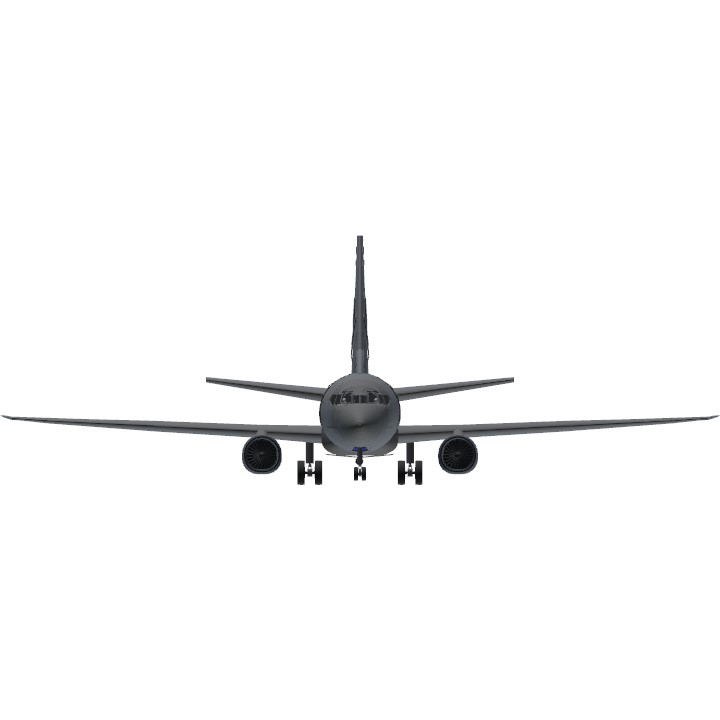
Maybe give the creator some credit?